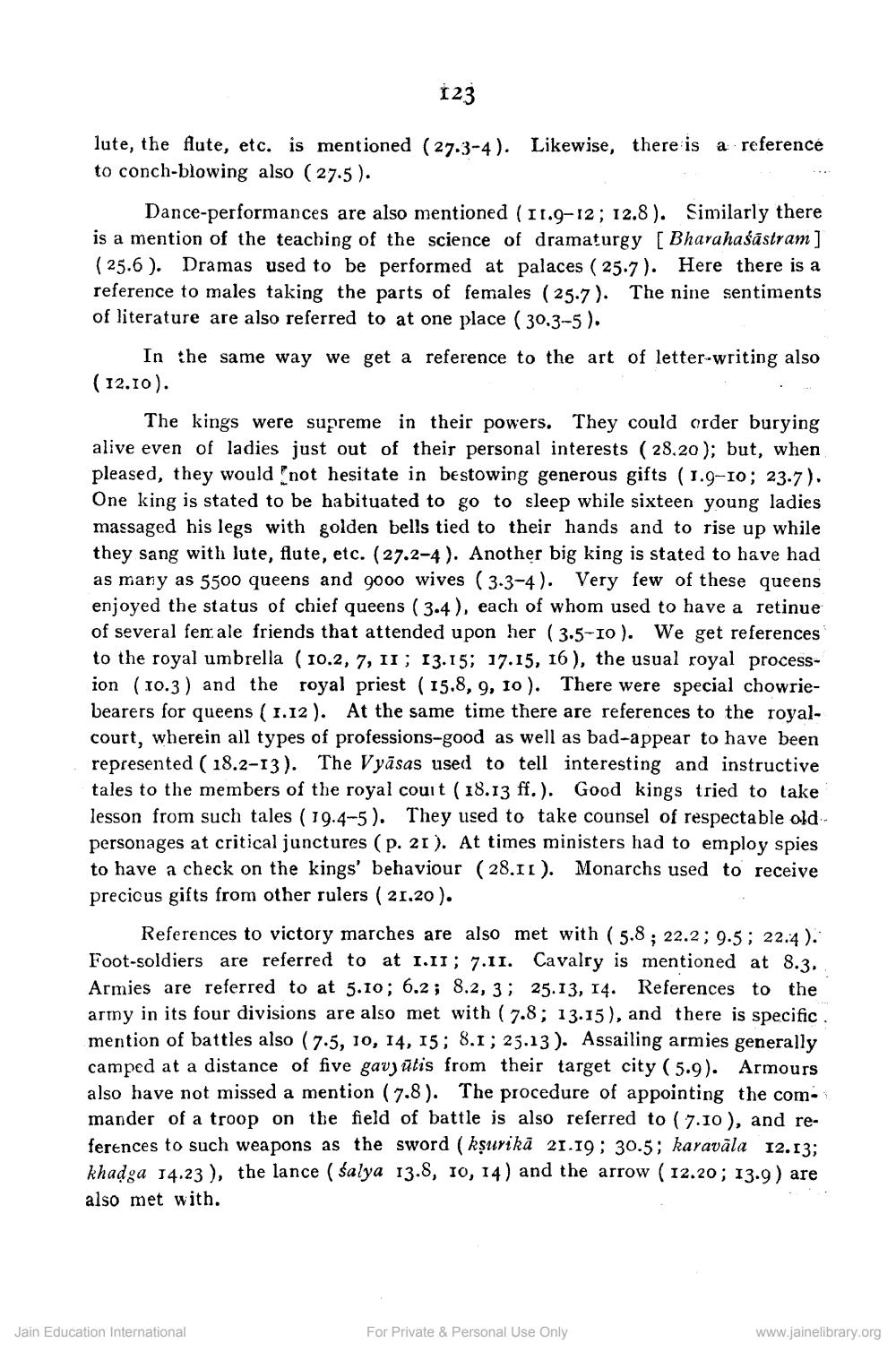________________
123
lute, the flute, etc. is mentioned (27.3-4). Likewise, there is a reference to conch-blowing also (27.5).
Dance-performances are also mentioned (11.9-12; 12.8). Similarly there is a mention of the teaching of the science of dramaturgy [Bharahaśāstram ] (25.6). Dramas used to be performed at palaces (25.7). Here there is a reference to males taking the parts of females (25.7). The nine sentiments of literature are also referred to at one place ( 30.3-5).
In the same way we get a reference to the art of letter-writing also ( 12.10).
The kings were supreme in their powers. They could order burying alive even of ladies just out of their personal interests ( 28.20 ); but, when pleased, they would not hesitate in bestowing generous gifts (1.9-10; 23.7). One king is stated to be habituated to go to sleep while sixteen young ladies massaged his legs with golden bells tied to their hands and to rise up while they sang with lute, flute, etc. (27.2-4). Another big king is stated to have had as many as 5500 queens and gooo wives (3.3-4). Very few of these queens enjoyed the status of chief queens (3.4), each of whom used to have a retinue of several female friends that attended upon her (3.5-10). We get references to the royal umbrella (10.2, 7, II; 13.15; 17.15, 16), the usual royal procession (10.3) and the royal priest ( 15.8, 9, 10). There were special chowriebearers for queens (1.12). At the same time there are references to the royalcourt, wherein all types of professions-good as well as bad-appear to have been represented (18.2-13). The Vyāsas used to tell interesting and instructive tales to the members of the royal couit (18.13 ff.). Good kings tried to take lesson from such tales (19.4-5). They used to take counsel of respectable old personages at critical junctures (p. 21). At times ministers had to employ spies to have a check on the kings' behaviour ( 28.11 ). Monarchs used to receive precicus gifts from other rulers ( 21.20).
References to victory marches are also met with (5.8 ; 22.2; 9.5; 22.4). Foot-soldiers are referred to at 1.11; 7.11. Cavalry is mentioned at 8.3. Armies are referred to at 5.10; 6.2; 8.2, 3; 25.13, 14. References to the army in its four divisions are also met with (7.8; 13.15), and there is specific mention of battles also (7.5, 10, 14, 15; 8.1; 25.13). Assailing armies generally camped at a distance of five gavjūtis from their target city (5.9). Armours also have not missed a mention (7.8). The procedure of appointing the commander of a troop on the field of battle is also referred to ( 7.10 ), and references to such weapons as the sword (kşurikā 21.19; 30.5; karavāla 12.13; khadga 14.23 ), the lance ( salya 13.8, 10, 14) and the arrow (12.20; 13.9) are also met with.
Jain Education International
For Private & Personal Use Only
www.jainelibrary.org




